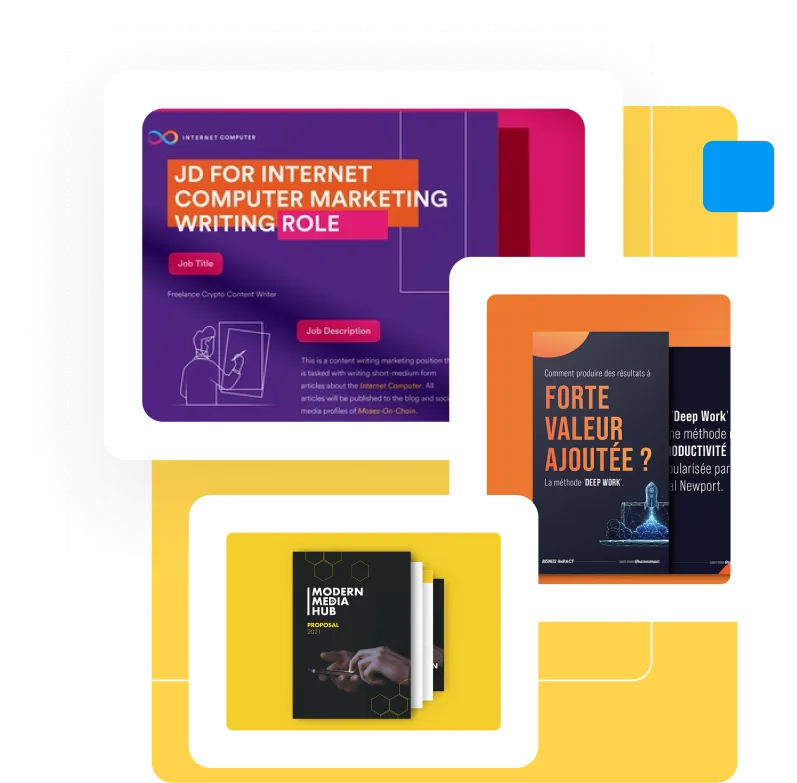

Learn How to Become A Marketing Designer
Want to make a career as a marketing designer? Here’s everything you need to know to get you started.

.svg)
Discover the skills, software and tasks you need to master if you want to become a marketing designer.
{{AD_BANNER="/dev/components"}}
What does a marketing designer do?
The marketing designer will outline their own design process, manage the workflow, create visual assets and nurture the brand, so they need to also be able to organize their time and ideas well.
A marketing designer that works in-house for a single firm is responsible for generating visual assets for advertising, marketing pitches and publications that meet the company's goals, as well as maybe working on web design and landing sites.
A marketing designer in an advertising agency, on the other hand, is more likely to work on client demands such as digital and print advertisements, brand identity, packaging, out-of-home advertising, and other projects.
If we're talking about an in-house marketing designer, we can imagine that person as the keeper and protector of the company's visual identity.
But marketing design is a pretty vast area, so let’s take a look at some common projects this type of designer has to tackle.
Brand identity
Marketing designers help build brand identity from scratch, creating logos, typography, color palettes, patterns, symbols, and other design elements. They also create brand guidelines that maintain the visual standard for the brand.

Social media graphics
With social media being a key marketing tool, designers create posts, stories, carousels, and ads that align with platform specifications and trends.
Digital ads
Companies require various digital ads, including PPC, native, and social media ads. Designers must adapt assets to different formats and styles for effective campaigns.
They also have to understand visual communication and design principles, such as balance and hierarchy to ensure the message comes across in just one glance.

Publication design and print materials
Marketing materials such as brochures, flyers, catalogs, and ebooks require specialized design skills. Knowledge of tools like InDesign and printing techniques is essential.

Email design
Email marketing is still incredibly important for every business, and the better designed and more personalized newsletters are, the better chances are of recipients converting into customers.
For these reasons, designers often have to design custom emails, banners, as well as responsive elements such as CTA buttons or \GIFs.
Branded merchandise and stationery
Companies use branded stationery and merchandise to enhance brand awareness. Designers create items like notebooks, tote bags, and keychains.
Marketing designers must know the requirements for printing design on different materials (e.g. plastic, metal, fabric, etc.).
Slide design
Custom presentation slides improve business communication, and increase audience engagement. Designers develop unique slide decks for pitches and reports.

Skills that every marketing designer must have

One doesn’t become a designer with a lot of responsibilities and a wide range of projects that easily. It takes a lot of studying, practice, artistry and time-management skills to get to that point.
But, when it comes to basic skills and software that a marketing designer needs, here are the most crucial ones we could name.
Graphic design (obviously!)
A solid understanding of color theory, typography, and design principles is crucial. Designers must create engaging visuals that resonate with audiences.
Research skills
Designers analyze company values, target audiences, competitors, and industry trends to craft effective designs.
Branding and brand nurturing
Beyond logos and colors, branding requires maintaining a cohesive visual identity across campaigns and business growth.
Marketing basics
Understanding marketing principles and consumer behavior helps designers create assets that drive engagement and conversions.
Prototyping
Web and app design require prototyping skills. Designers map layouts, elements, and interactions before finalizing designs.
Teamwork
Collaboration is key. Designers work with marketing teams, developers, and executives, requiring adaptability and strong communication skills.
Education and career path
If you want to work as a marketing designer, one of the first things you should think about is how much education you'll need. A surprising 75.6 percent of marketing designers hold a bachelor's degree, according to Zippia.
They also discovered that master's degrees are held by only 5.7 percent of marketing designers.
Despite the fact that most marketing designers hold a bachelor's degree, it is feasible to work as one with only holding a high school diploma and getting an extra online education, or even being self-taught nowadays.
Conclusion
We hope this sheds some light on how to become a marketing designer. Whether you’re choosing this career for yourself, or want to know how to hire the right designer for your business, these are definitely the basics skills and knowledge to look out for.
If you want to learn more about marketing design, make sure to check out our articles on how to create design-led content marketing, and where to find great ad graphics.
Having lived and studied in London and Berlin, I'm back in native Serbia, working remotely and writing short stories and plays in my free time. With previous experience in the nonprofit sector, I'm currently writing about the universal language of good graphic design. I make mix CDs and my playlists are almost exclusively 1960s.
A design solution you will love
Fast & Reliable
Fixed Monthly Rate
Flexible & Scalable
Pro Designers





.jpg)
.jpg)
